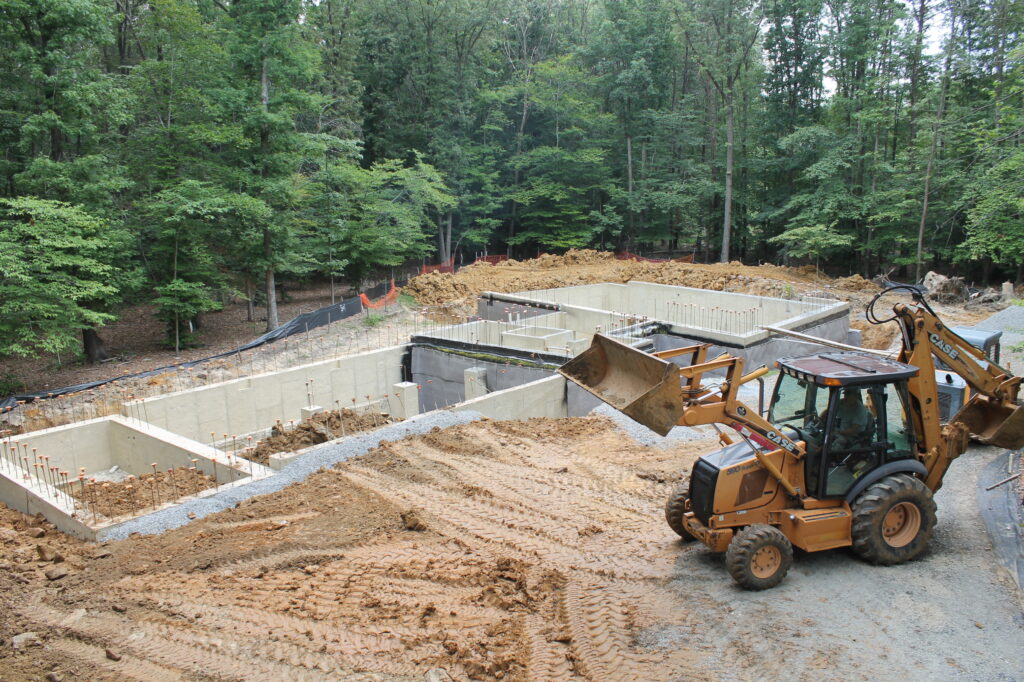Structural
Foundations Reinvented: The Art and Science of Backfilling in Construction
Backfilling is a critical aspect of construction and civil engineering, embodying the Art and Science of Backfilling. It entails replacing excavated soil or material into a trench or foundation to restore the ground to its original or desired level. This process is indispensable for supporting structures, enhancing stability, and establishing a suitable foundation for diverse construction projects. Let’s explore the fundamental aspects of backfilling:
1. Purpose of Art and Science of Backfilling:
a. Foundation Support:
Art and Science of Backfillingis often done around foundations to provide support and prevent settling. It helps distribute loads evenly and enhances the stability of structures.
b. Trenches and Excavations:
In trenches and excavations, Art and Science of Backfilling is performed to restore the ground surface and create a stable foundation for structures like pipelines, utilities, or retaining walls.
c. Enhancing Structural Integrity:
Properly compacted backfill improves the overall structural integrity of the construction, reducing the risk of settlement or uneven subsidence.
2. Types of Backfill Materials:
a. Natural Soil:
The excavated soil from the trench or foundation is often used as backfill material. However, it needs to be properly compacted to achieve the desired density.
b. Engineered Fill:
In some cases, specially engineered fill materials may be used, especially when the natural soil lacks the required strength or drainage properties.
c. Gravel or Stone Fill:
For specific applications, such as drainage systems, gravel or stone fill may be used to enhance drainage capabilities and stability.
3. Backfilling Process:
a. Layer-by-Layer Placement:
It is typically done in layers, with each layer being compacted before the next one is added. This ensures proper compaction and reduces the potential for settlement.
b. Compaction:
Compaction is a critical step to eliminate voids within the backfill material. Various compaction methods, such as mechanical compactors or vibratory rollers, may be employed.
c. Moisture Control:
Controlling the moisture content of the backfill material is essential. Excessive moisture can lead to poor compaction, while insufficient moisture may result in difficulty achieving the desired density.
4. Considerations and Challenges:
a. Settlement:
Inadequate compaction or the use of inappropriate backfill materials can lead to settlement issues, causing uneven subsidence of the ground.
b. Drainage:
Proper drainage considerations are crucial, especially in areas prone to water accumulation. Adequate drainage helps prevent water-related issues, such as erosion or soil instability.
c. Compaction Testing:
Periodic compaction testing is often conducted to ensure that the backfill material achieves the specified density and meets engineering standards.
5. Backfilling in Specific Applications:
a. Utilities Installation:
Art and Science of Backfilling is extensively used in the installation of utility lines, such as water pipes, sewer lines, and electrical conduits.
b. Retaining Walls:
For retaining walls, backfilling behind the wall is critical to provide lateral support and prevent the wall from collapsing.
c. Foundation Backfill:
Around building foundations, proper Art and Science of Backfilling is essential to support the structure and mitigate the risk of settlement.
6. Environmental Impact:
a. Sustainability Practices:
In modern construction, there is a growing emphasis on sustainable backfilling practices, such as using recycled materials or implementing erosion control measures.
b. Vegetation and Landscaping:
Consideration for landscaping and vegetation may be incorporated into the backfilling process to restore the site aesthetically.
Conclusion:
In the intricate dance of construction, backfilling takes center stage, providing the necessary support and stability for a wide range of structures. From foundations to trenches, the meticulous process of layering, compacting, and ensuring proper drainage ensures that the ground beneath our structures remains steadfast and reliable. As construction practices evolve, so too does the art and science of backfilling, ensuring the longevity and resilience of the built environment.


